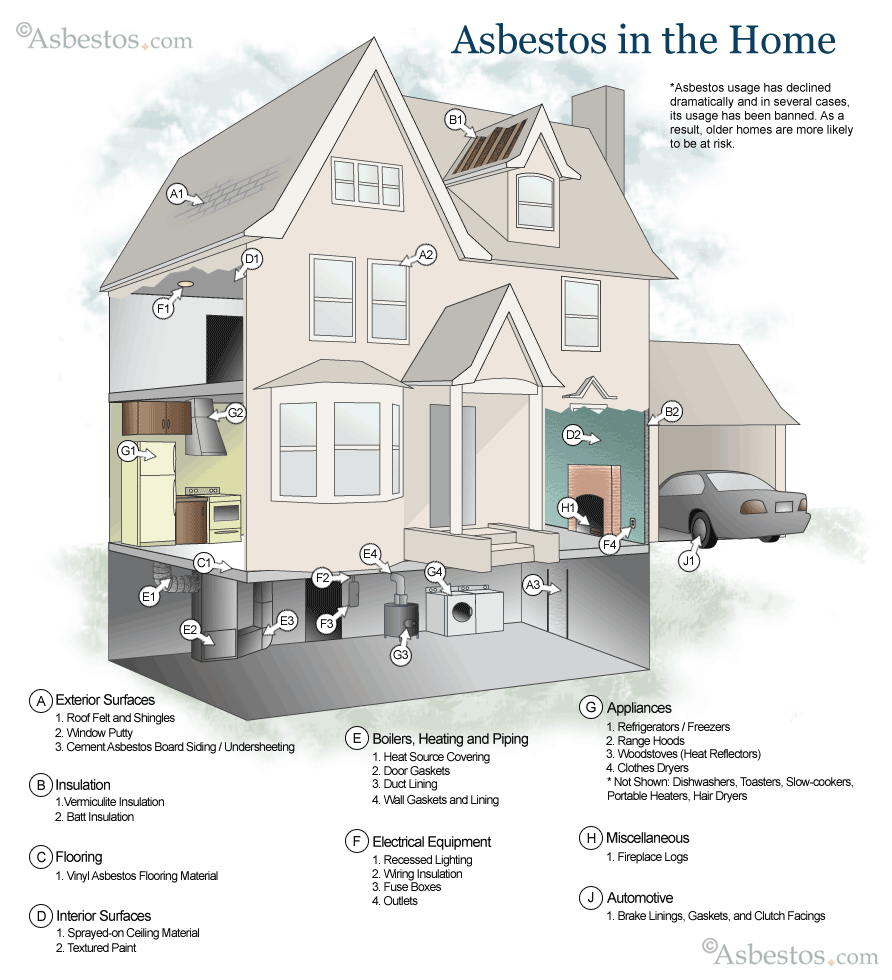 As responsible citizens of Earth, we are obligated to nurture and sustain this planet. In the world of home construction and landscaping, there are many things that should be taken into consideration. Many older homes could need repairs or additional renovations in areas that are susceptible to natural disasters.
As responsible citizens of Earth, we are obligated to nurture and sustain this planet. In the world of home construction and landscaping, there are many things that should be taken into consideration. Many older homes could need repairs or additional renovations in areas that are susceptible to natural disasters.Often appearing in roof shingles, popcorn ceilings, piping and insulation, asbestos became one of the most popular building applications of the 20th century.
There are many green, Eco-friendly materials that replace the need for asbestos and can reduce energy costs annually. The implementation of Eco-construction and alternative energy solutions will play an important role in the transformation to a healthier and sustainable world.
If you locate any suspected asbestos in the home, most experts suggest leaving it un-disturbed until a home inspector can examine your property, take evaluations and determine the safest course of action. Sometimes the best action is no action at all. Disturbing asbestos in good condition may cause its fibers to be released into the air. However, if removal is necessary, it must be performed by a licensed abatement contractor who is trained in handling hazardous substances.
Long term exposure to damaged airborne asbestos fibers can lead to the development of a severe lung ailment known as pleural mesothelioma. With a latency period that lasts from 20 to 50 years, it isn’t until the later stages of progression when physicians usually are able to accurately diagnose. Mesothelioma prognosis varies from patient to patient, depending on many factors. These include age of diagnosis, latency period and cigarette smoking.
Recently, congress passed an economic stimulus package that promotes energy efficiency for home and business owners. The American Recover and Reinvestment Tax Act of 2009 includes incentives for upgrading to more Eco-friendly/sustainable methods of energy and insulation. The move to a greener lifestyle will build on the change to healthier methods of building products, home remodeling and renovation.
Many cities and states in the U.S. are pushing for these green sustainable technologies to be utilized in the public and private sectors. Everyone strives for clean air to breathe and clean water to drink. Unfortunately, many modern conveniences increase pollution and health problems. Green alternatives to asbestos include the use of lcynene foam, cotton fiber and cellulose.
The use of cotton fiber foam has demonstrated to reduce energy costs by 25 % per year. There is no need for any products used in construction to be made from asbestos, yet over 3,000 work and home-based materials still contain this toxin. Many locations throughout the United States are swiftly changing their construction practices to suit the environment and the health of human beings.